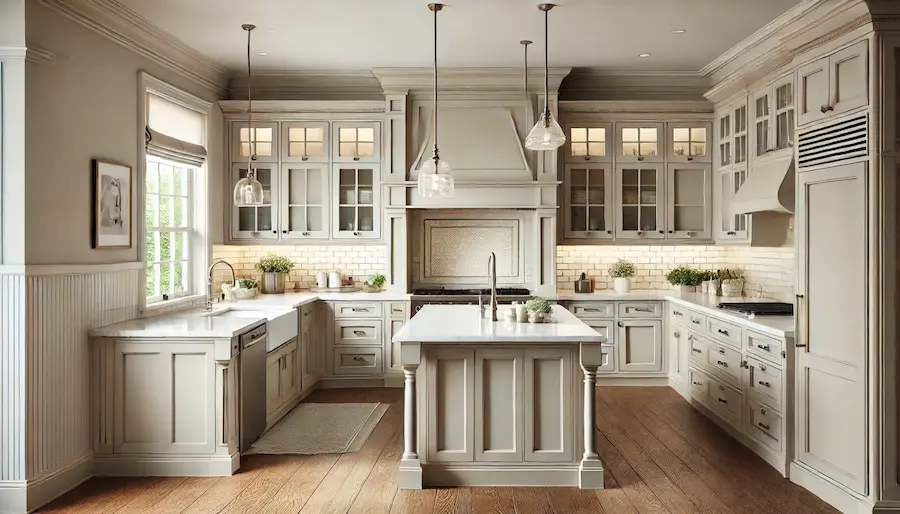A transitional kitchen seamlessly blends traditional and contemporary design elements, creating a timeless and versatile space that balances classic charm with modern functionality. This article explores the history, key features, applications, and considerations for designing a transitional kitchen.
History and Origins of Transitional Kitchens
The transitional design style emerged in the mid-20th century as a response to the stark modern and mid-century modern styles of the previous era. Homeowners and designers sought to blend the comfort and familiarity of traditional design with the clean lines and functionality of contemporary aesthetics, leading to the development of transitional interiors. This approach gained popularity for its ability to create timeless spaces that are both functional and aesthetically pleasing.
Key Features of Transitional Kitchens
- Neutral Color Palette: Utilizing whites, grays, beiges, and wood tones to create a calm and cohesive environment.
- Streamlined Cabinetry: Incorporating shaker-style or simple paneled cabinets that offer a blend of traditional craftsmanship and modern simplicity.
- Mixed Materials: Combining natural materials like wood and stone with modern elements such as stainless steel or glass to add depth and interest.
- Functional Layout: Emphasizing practicality with open floor plans, ample storage, and multi-purpose kitchen islands that cater to contemporary lifestyles.
- Subtle Decorative Details: Incorporating crown molding, decorative backsplashes, or elegant hardware to add character without overwhelming the space.
Applications of Transitional Kitchens
- Versatile Home Design: Suitable for various architectural styles, from traditional homes seeking a modern update to contemporary spaces desiring a touch of classic warmth.
- Personalized Aesthetics: Allows homeowners to blend personal preferences, combining heirloom pieces with modern appliances to reflect individual style.
- Enhanced Resale Value: The broad appeal of transitional kitchens can attract potential buyers, making them a smart investment for homeowners.
Considerations When Designing a Transitional Kitchen
- Balance of Elements: Aim for a harmonious mix of traditional and modern features to avoid leaning too heavily toward one style.
- Quality Materials: Invest in durable, high-quality materials that enhance both the aesthetic and functionality of the kitchen.
- Cohesive Design: Ensure consistency in color schemes, finishes, and fixtures to create a unified look throughout the space.
- Functional Lighting: Incorporate a combination of task and ambient lighting to enhance both the practicality and ambiance of the kitchen.
Conclusion
Transitional kitchens offer a harmonious blend of traditional elegance and modern simplicity, resulting in a timeless and adaptable design. By thoughtfully combining elements from both styles, homeowners can create a kitchen that is both functional and aesthetically pleasing, catering to diverse tastes and enhancing the overall appeal of the home.
